以6个原型阐述游戏和故事的情感设计
Kolding School of Design传播设计系的研究生Eva Knutz和副教授Thomas Markussen举办了一次特别的研讨会。这一研讨会的特别之处便在于它是关于如何为囚犯及其孩子们设计游戏;也就是让他们在每周探访时一起玩游戏,并以此研究这些囚犯和孩子们在游戏过程中会如何传达被囚禁或者分离的情感。
该研讨会被分为两个部分,一部分是帮助学生熟悉监狱生活,受情感驱动的设计,游戏设计,虚拟的内容和故事。随后研讨会将移到一个游戏车间中,让学生们能够面对特别的用户而亲身体验游戏设计。最后Eva Knutz向我们解释道,他们希望通过这一活动研究如何将游戏设计应用到我们社会的一些新领域中。同时他们也是在研究如何将游戏和故事用于发展新的社交关系并改变人们的生活方式(或交流方式)。
6个游戏理念
该研讨会的对话最终衍生出了6个游戏理念,它们有助于我们根据情感和故事设计出一款真正有趣的监狱游戏。
这6大游戏原型是从个人及个人情感出发,其宗旨是让囚犯及其孩子能够在每周探访时间共同玩游戏。
游戏原型1:“Dad’s Escape”
游戏是从两个玩家(爸爸和孩子)共同讨论本周课程而展开。基于彼此间的谈话,他们将创造出游戏中所需要的(紫色)元素卡。《Dad’s Escape》包含了两个游戏角色:囚犯和狱卒(在灰色和黑色圆圈中那个由乐高所搭建起来的牢房里四处走动着)。囚犯(也就是较大的白球)必想办法逃出监狱(即跳到灰色圆圈中),而狱卒(白色的小球)则需要想办法抓住他。玩家将使用元素卡创造出虚构的逃跑与追逐,并使用两种颜色的骰子决定成功与失败。一旦囚犯来到了代表“自由”的方块时,他便获得了自由,游戏也就结束了。这一游戏原型的理念便是创造出一种不断发展的动态游戏,维系起儿童与成人之间的对话,并涵括了一些想象元素而推动着他们之间的进一步交流。
游戏原型2:“Monster Box”
“Monster Box”的游戏目标便是希望通过在孩子们探访父亲时进一步加深他们彼此间的关系,并推动着他们共同准备(绘制/制作)游戏。游戏中有一种循环:在探访期间,爸爸将阅读故事,而孩子将描绘怪物,并将其交给爸爸。当他们分离时,爸爸将基于孩子的画准备游戏创作,而孩子也将继续在家里画画。当他们再次见面时,爸爸已经准备好了游戏,而孩子也将与之分享这期间所画的内容。这一过程将不断重复着。而这整个过程中所需要的工具都包含在一个叫做“Monster Box”的盒子中。
游戏原型3:“Serial-Killer Game”
“Serial-Killer Game”的设计师想要区分犯罪行为与罪犯所具有的能力。这一游戏原型的理念便是基于某些罪犯具有一些独特的技巧,能力和策略,并且能够经由游戏而延伸下去并促成各种对话。这种能力可能是严谨,擅于观察,系统化,有耐心或者擅于创造等。“Serial-Killer Game”中具有得分的游戏玩法(即能否抓住一个目标)。一方获胜便代表另一方必须完成一个任务,例如花一周时间去观察植物的生长。“Serial-Killer Game”的目标是根据“发展能力”而维系起囚犯与他们成人孩子之间的社交关系。
游戏原型4:“Haggling Game”
“Haggling Game”是针对于囚犯(传统的穆斯林)与他们的儿子(淡化的穆斯林)的游戏,其前提是爸爸和儿子间失去了联系。他们没有共同话题,(就宗教来说)也没有共同的价值观,甚至他们对于一位好父亲或者一个称职的穆斯林的身份定义也都截然不同。所以他们又会如何选择游戏,并且共同度过美好的游戏时光呢?因为他们都喜欢争辩,喜欢衡量事物和质量,所以能够吸引他们的唯一元素便是:谈判。这便是这一游戏原型的侧重点,即通过使用一些不同权重的卡片,让这对父子在此平衡并争论不同卡片的价值/权重。
游戏原型5:“Stepping Stones”
“Stepping Stones”中包含了一些铺设于地面上的互动“石子”。两名玩家(囚犯和孩子)将从一个石子跳到另一个石子上。如果玩家能够稳当地停落在石子上,石子便会变成一个问题。并且随着游戏的进行,问题将从最初的“告诉我一个秘密”慢慢提升难度而变成“监狱里是什么样子?”,并在临近结束时又再次降低问题难度。而能否成功答对问题也是取决于囚犯是否足够诚实,并且是否愿意向孩子呈现出监狱中的情形。游戏理念便是让玩家间通过相互合作(在石子上跳跃)而回答一些近乎批判性的问题。
游戏原型6:“Show-Your-Everyday”
在这一游戏原型中,不管是孩子还是家长都必须创造属于自己的游戏卡片,即在每周探访时将图片带过来并将其贴在卡片上。然后便可以开始游戏了。游戏是呈现在一个棋盘上。当玩家降落在一个“行动卡片”上时他就必须完成一个行动,或者他们也可以猜测彼此的“每日图片”中会出现何种内容。图片便是这款游戏的焦点,并且它既能让孩子了解到监狱里的情形(即爸爸所处的环境)也能让家长看到孩子所生活的环境(包括学校,家里或参加的活动等)。(本文为游戏邦/gamerboom.com编译,拒绝任何不保留版权的转载,如需转载请联系:游戏邦)
Designing Emotions for Games and Narratives
The seminar took place on 25 and 26 February and was organised by PhD student Eva Knutz and Associate Professor Thomas Markussen, both affiliated with the Department of Communication Design at Kolding School of Design. The seminar took its point of departure in a specific design “case”, namely that of designing a game for inmates and their child/children; a game to be played during the weekly visiting hours. The idea was to investigate how to verbalise difficult subjects and emotions such as imprisonment and separation through play.
The day was divided into two sessions; a seminar part focusing on providing input to design students about prison life, emotion driven design, game design, fiction and narration. The seminar was followed by a game workshop giving the students “hands-on” experience with game design directed at a specific audience. Subsequently, Eva Knutz explained that the idea behind th event was to explore how to apply game design to new areas of our society. It was also to investigate how game and fiction can be used to devlop new social relations and change the way people live – or communiate. With this approach,Kolding School of Design wants to set a new agenda for game design.
Five talks
The seminar was kicked-off by Lars Thuesen and Maria Kj?rgaard from The Danish Prison Service. Their talk concerned life as a prison inmate and how to maintain a relationship with one’s family. Thusen and Kj?rgaard were followed by a research team from Delft. Pieter Desmet, a pioneer in ”emotion driven design”, talked about ”design for happiness”. Desmet believes that as a designer you need to be able to design based on experiences which can influence our relationship with other people long-term and influence having a “happy, meaninful life”. The simple definition of emotions is that we are attracted by what becomes us and repelled by that which makes us uncomfortable. Thus, Desmet investigates the individual and the feelings of the individual exploring what makes us happy. Valentijn Visch talked about how games can be designed and used in the treatment of drug addicts. One of the points of his talk was that the research field of ”serious gaming” should shift its narrow focus from computer games to other types of games. This would also involve shifting focus from the massive influence of the software developer to a more experimental and design driven approach. Under the headline, ”Design for Crime” Steven Fokkinga talked about ”negative emotions” and the potential of negative emotions in connection with game design. This provides the designers with new possibilities for working with games in areas such as prisons and hospitals, where strong and intense emotions predominate: hate, longing, loneliness, anxiety – and hope. In his talk “Constructing Narrative Worlds”, Per Krogh Hansen from the University of Southern Denmark gave a talk about fiction and narration focusing on explaining what the two concepts have to offer designers and how games and fiction contruct meaning.
Workshop and game concepts
The five talks prepared the way for three hours of intense workshop. The results of this were six game concepts (listed below) all offering different suggestions for how to design a prison game based on an emotion driven and narrative perspective.
The six game prototypes take their starting point in the individual and the feelings of the individual and are intended for the inmate (often dad) and the child to play during weekly prison visiting hours.
Game prototype1: “Dad’s Escape”
The game begins with two players (dad and child) discussing the course of the week. Based on their conversation they create (purple) element cards to be used in the game. Dad’s Escape contains two game characters: a Prisoner and a Prison Guard who move around in a “prison cell” (made from Lego) on a path constructed fom grey and black circles. The Prisoner (the large, white ball) must try to escape (when he lands on a grey circle), whie the Prison Guard (the small white all) will try to trap him. The players use the element cards to create imaginary escape attempts – or traps – and a two-coloured dice decides whether the attempts are succesful or not. Once the Prisoner lands on the square “freedom”, he is free, and the game is over. The idea behind the game is to create a dynamic game that develops over time and that helps create a diaogue between the child and the grown-up while including imaginary elements that call for further conversation.
Game prototype 2: “Monster Box”
The objective of “Monster Box” is to produce a game that will bring dad and child closer together during the visit and that is sufficiently motivating for them to want to prepare (draw/make games) between the visits. The game has a circular universe: During the visit, dad reads a story while the child draws monsters. The child gives the drawings to dad. While they are apart (separated between prison and home), dad prepares a game based on the child’s drawings while the child continues to draw at home. When they meet again, dad has prepared a game and the child has new drawings to share. The process repeats itself. All necessay tool for such a process are contained in a box called “the Monster Box”.
Game prototype 3: “Serial-Killer Game”
The designers of the “Serial-Killer Game” want to separate the criminal act from the competencies which the criminal person develops. The idea is to take a serious approach to the fact that some criminals actually develop techniques, abilities and strategies that are quite unique and that could be passed on via games and thus promote dialogue. Abilities such as being precise, observant, systematic, patient, inventive, etc. “Serial-Killer Game” contains a gameplay (to catch or not to catch an object) in which you score points. The person who wins presents its counterpart with a task; this could be to observe a plant for a week watcing it grow. “Serial-Killer Game” intends to create or establish a basis for a social relation between and (older) inmate and his/her adult child based on “developing abilities” when there is no trust.
Game prototype 4: “Haggling Game”
“Haggling Game” is designed for a prisoner (orthodox muslim) and his son(moderate muslim) and takes its starting point in a situation where father and son have lost touch. They have nothing to talk about and don’t share the same values (anymore) concerning religion, upbringing (e.g. what it means to be a good dad or a good muslim). So, what are their options for playing and having a good time together? Well, they both like haggling; weighing things and qualities. In short: negotiating. And this is the focal point of the game; using cards (of different weight) that either say what one thinks is right, wrong, or should be done, they must balance the weight and haggle the value of the worth/weight of the cards.
Game prototype 5: “Stepping Stones”
“Stepping Stones” consists of interactive “stones” on the floor. The two players (inmate and child) jump from stone to stone. If you land on a stone, the stone turns into a question. The questions become increasingly difficult beginnng with “tell me a secret” to “what’s it like being in prison?” and then become easy towards the end again. The success parameter for being able to answer the questions rests on the inmate’s ability to be honest and open to the needs of the child to understand the prison world and the reasons for the sentence. The game attempt to unite play (jumping from stone to stone) with more or less critical questions that pursue the players in a kind of jump dance on the floor.
Game prototype 6: “Show-Your-Everyday”
For this game, the child and the adult must make their own game pieces and create their own game cards by bringing pictures from the week and sticking them onto cards. Then the game can begin. The game is played on a game board. You can land on an “action card” where you must complete an action or on “show-your-everyday” where you must guess what goes on in eachother’s “everyday pictures”. The pictures are the focal point of the game and enable the players to catch a glimpse of what goes on in prison (where dad is) and outside (school, home, activities) where the child lives its life.
The seminar Designing Emotions for Games and Narratives is Kolding School of Design’s first attempt to create a closer link between new knowledge from design research and the unique visual, experimental approach of the design profession. Moreover, the project is part of large-scale venture on the part of the school of creating newapproaches to game design and fiction.
“The exciting and thought-provoking game concepts and the seminar as a whole were very positively received by teachers, researchers, and design students and calls for repetition next year”, conclude the two organisers from Kolding School of Design.(source:designskolenkolding)

























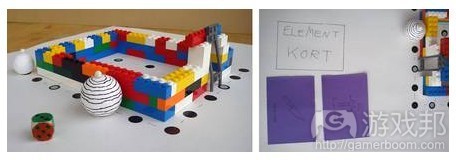
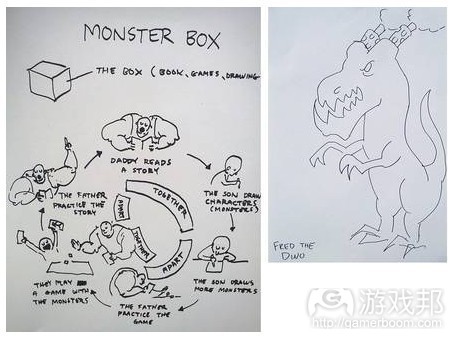
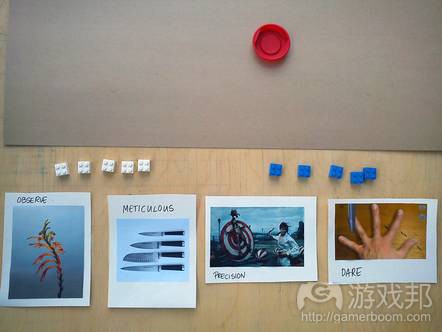
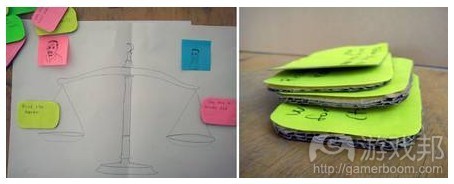
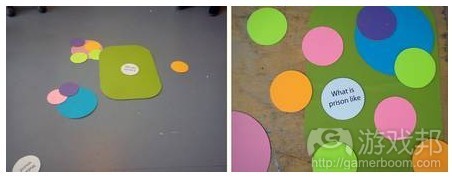















 闽公网安备35020302001549号
闽公网安备35020302001549号